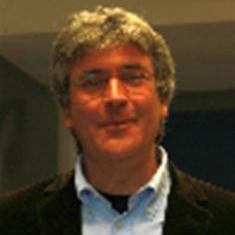Climate Change, Marine Renewables and Sustainable Development
A special issue of Sustainability (ISSN 2071-1050). This special issue belongs to the section "Sustainable Oceans".
Deadline for manuscript submissions: closed (31 July 2023) | Viewed by 3777
Special Issue Editors
Interests: marine renewable energy; marine observation networks; coastal processes; applied statistics
Interests: marine renewable energy; stochastic modeling; extremes; marine monitoring systems
Special Issues, Collections and Topics in MDPI journals
Special Issue Information
Dear Colleagues,
A global transition from fossil fuels to a low-carbon future with significant penetration of marine renewables should be made in a way that minimizes, or even avoids, adverse environmental impacts and concurrently follows the UN’s Sustainable Development Goals (SDGs). The development of the marine renewable energy (MRE) sector will significantly mitigate the impact of climate change.
The rate of MRE development and climate change mitigation is still behind in achieving the 2 °C climate goal of the Paris Agreement. Therefore, more actions to tackle climate change and enhance sustainability are imperative. For instance, the goal of sustainably managing our seas requires Marine Spatial Planning (MSP) and integrated coastal/ocean management to map marine-based activities and develop efficient management and decision support tools. It is evident that this approach will further unlock and facilitate the expansion of MRE projects by balancing the needs of marine users and ensuring the sustainability of coastal and marine ecosystems. The development of the MRE sector is also susceptible to climate change. Therefore, a better understanding of how climate change impacts marine energy resources provides input to the design of more efficient MRE technologies and long-term planning procedures.
This Special Issue aims at presenting and highlighting novel methods, modeling approaches and solutions in the aforementioned challenges and welcomes both research articles and reviews. Research areas may include (but are not limited to) the following:
- MRE technologies;
- Offshore wind, wave, ocean/tidal current and offshore solar energy;
- Emerging MRE sources;
- Knowledge gaps in MRE;
- MRE and climate nexus;
- Climate change impacts on MRE at different scales;
- Tools for MSP.
Dr. Flora E. Karathanasi
Dr. Takvor Soukissian
Dr. Ioannis Kyriakides
Guest Editors
Manuscript Submission Information
Manuscripts should be submitted online at www.mdpi.com by registering and logging in to this website. Once you are registered, click here to go to the submission form. Manuscripts can be submitted until the deadline. All submissions that pass pre-check are peer-reviewed. Accepted papers will be published continuously in the journal (as soon as accepted) and will be listed together on the special issue website. Research articles, review articles as well as short communications are invited. For planned papers, a title and short abstract (about 100 words) can be sent to the Editorial Office for announcement on this website.
Submitted manuscripts should not have been published previously, nor be under consideration for publication elsewhere (except conference proceedings papers). All manuscripts are thoroughly refereed through a single-blind peer-review process. A guide for authors and other relevant information for submission of manuscripts is available on the Instructions for Authors page. Sustainability is an international peer-reviewed open access semimonthly journal published by MDPI.
Please visit the Instructions for Authors page before submitting a manuscript. The Article Processing Charge (APC) for publication in this open access journal is 2400 CHF (Swiss Francs). Submitted papers should be well formatted and use good English. Authors may use MDPI's English editing service prior to publication or during author revisions.
Keywords
- harvesting devices
- resource assessment
- multi-purpose platforms
- climate change adaptation
- marine spatial planning
- socio-economics of marine renewables
- environmental sustainability






